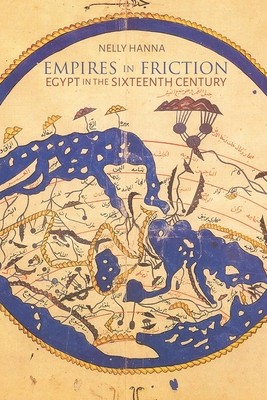
- We will send in 10–14 business days.
- Author: Nelly Hanna
- Publisher: Syracuse University Press
- ISBN-10: 0815638507
- ISBN-13: 9780815638506
- Format: 16.2 x 23 x 2.6 cm, kieti viršeliai
- Language: English
- SAVE -10% with code: EXTRA
Reviews
Description
In 1517, the Ottoman Empire had finally defeated the Mamluk Sultanate in Egypt, completing their conquest of the Middle East and turning Egypt into a province of the Ottoman Empire. While much has been documented about the Mamluk period until 1517, publication on the historical record about the sixteenth century reveals little from distinctly Egyptian perspectives. In Empires in Friction, Nelly Hanna explores this transitional period and provides insight into the intricate dynamics of imperial control and political transition.
With an original approach to understanding empire, Hanna challenges traditional narratives that emphasize the centralization of power and the dominance of the capital. Instead, she proposes a nuanced paradigm that focuses on the imperial problem of distance, the autonomy of provinces, and the continuity of local customs and economic activities across different imperial regimes. Hanna dives into the financial, economic, and commercial domains where Ottomanization happened. In each, the new ruling power faced challenges in understanding the existing processes, but ultimately the ability of Egyptian merchants to prosper under Ottoman rule shows how Egypt remained under the Ottomans for so many centuries. Hanna deftly demonstrates the strain and areas of conformity in transferring from one imperial system with specific traditions to another. Fused together through the continuation of provincial operation, the Mamluk and Ottoman rules are not observably differentiable during the sixteenth century as the periphery operates at an arm's length from the Ottoman capital.EXTRA 10 % discount with code: EXTRA
The promotion ends in 23d.15:06:26
The discount code is valid when purchasing from 10 €. Discounts do not stack.
- Author: Nelly Hanna
- Publisher: Syracuse University Press
- ISBN-10: 0815638507
- ISBN-13: 9780815638506
- Format: 16.2 x 23 x 2.6 cm, kieti viršeliai
- Language: English English
In 1517, the Ottoman Empire had finally defeated the Mamluk Sultanate in Egypt, completing their conquest of the Middle East and turning Egypt into a province of the Ottoman Empire. While much has been documented about the Mamluk period until 1517, publication on the historical record about the sixteenth century reveals little from distinctly Egyptian perspectives. In Empires in Friction, Nelly Hanna explores this transitional period and provides insight into the intricate dynamics of imperial control and political transition.
With an original approach to understanding empire, Hanna challenges traditional narratives that emphasize the centralization of power and the dominance of the capital. Instead, she proposes a nuanced paradigm that focuses on the imperial problem of distance, the autonomy of provinces, and the continuity of local customs and economic activities across different imperial regimes. Hanna dives into the financial, economic, and commercial domains where Ottomanization happened. In each, the new ruling power faced challenges in understanding the existing processes, but ultimately the ability of Egyptian merchants to prosper under Ottoman rule shows how Egypt remained under the Ottomans for so many centuries. Hanna deftly demonstrates the strain and areas of conformity in transferring from one imperial system with specific traditions to another. Fused together through the continuation of provincial operation, the Mamluk and Ottoman rules are not observably differentiable during the sixteenth century as the periphery operates at an arm's length from the Ottoman capital.

Reviews